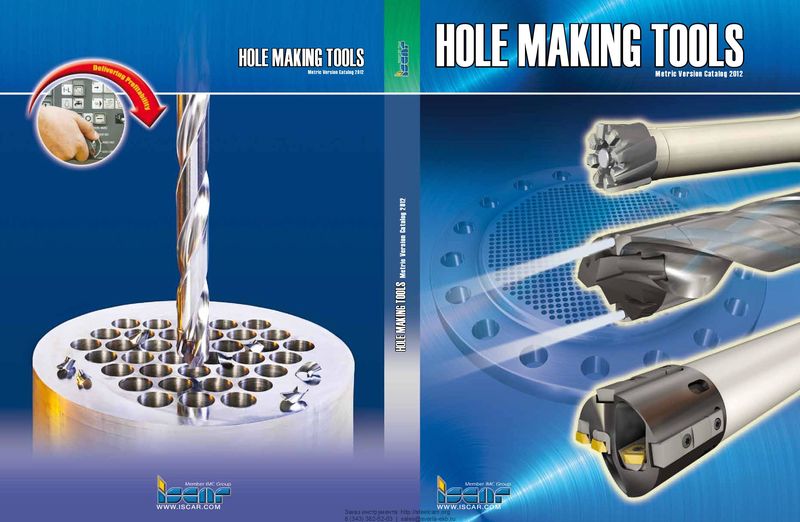Каталог Iscar высокоточные развертки и метчики 2022 - страница 22
Навигация
 Каталог Iscar инструмент для обработки отверстий
Каталог Iscar инструмент для обработки отверстий Каталог Iscar державки и пластины для нарезания резьбы 2022
Каталог Iscar державки и пластины для нарезания резьбы 2022 Каталог Iscar крепление инструмента
Каталог Iscar крепление инструмента Каталог Iscar токарные пластины ISO 2022
Каталог Iscar токарные пластины ISO 2022 Руководство Iscar режущий инструмент в производстве штампов и пресс-форм
Руководство Iscar режущий инструмент в производстве штампов и пресс-форм Каталог Iscar сверла ружейные и для глубокого сверления 2022
Каталог Iscar сверла ружейные и для глубокого сверления 2022 
REAMERS USER GUIDE Cutting Speed Coolant/Lubrication The cutting speed has the highest influence on the The high degree of friction between the tool and the surface quality of the reamed hole and on the life of the wall being reamed demands the use of a fluid for tool. Increasing the cutting speed beyond the optimum lubrication and cooling. Using lubrication is more speed will cause increased tool wear due to the increased critical for maintaining tolerances than using a coolant. cutting temperature. The increased speed also causes General cutting oils and emulsions may be used. It an increase in the built-up edge (material that is welded should be noted that in some cases emulsions will yield to the cutting edge). The built-up edge damages the a better surface finish than cutting oils. Emulsions are surface finish and shortens the life of the tool. In order thinner fluids that are able to reach and more uniformly to achieve high surface quality and longer tool life, the lubricate the cutting edges better than viscous cutting cutting speed for reaming should be kept relatively low. oils (especially when performing deep applications). In order to determine the most suitable lubricant Feed Rate for a particular application, tests should be run on The feed rate directly influences the wear on the cutting the material to be cut, on a case-to-case basis. edge. As the feed rate is increased, the cutting forces increase almost proportionally. The feed, however, Reaming Prerequisites has less influence on the machined surface quality In order to achieve high tolerances for and tool wear than the cutting speed (i.e. the feed reaming applications, there are certain can be varied in a relatively wide range without having requirements that must be considered. material influence the quality of the machined hole and 1 Condition of the tool - If the tool is reground, both an exact the respective tool life). It is therefore recommended concentricity and high quality grinding are indispensable. to select the highest possible feed in order to shorten 2 Workpiece material - Axis shifting and warping (i.e. reaming times without significantly reducing the tool life. incorrect hole positioning) can only be corrected to a Reaming AllowanceThe reaming allowance (the amount of material to bereamed) also influences the tool life. In order to achievehigh tool life, the reaming allowance should be keptat a reasonable minimum considering the process tobe performed. If the reaming allowance is too small, itmay result in a high dimensional variation (inability tomaintain the required tolerances) and a decrease in themachined surface quality.When reaming materials thathave surface defects or have been welded or flamecut, the reaming allowance should be increased sothese factors do not appear on the reamed surface.certain degree when reaming. A critical factor is theinitial opening in the workpiece. This opening must beeven, or if the prepared hole is countersunk, a conecountersink must be used. Failure to properly preparethe initial opening can result in irregular countersinkingthat leads to the reamer being pushed out of itsproper alignment. Ideally, pre-machining should beperformed in a chuck to avoid alignment defects.3 Through holes - For best results, the holes to be reamedshould extend completely through the workpiecematerial. This allows for easy exit of both the cuttingfluid and the reamed material. Negative flute reamersare advantageous in through hole reaming. 4 Blind holes - Use straight flute reamers for blind holes. 332 ISCAR